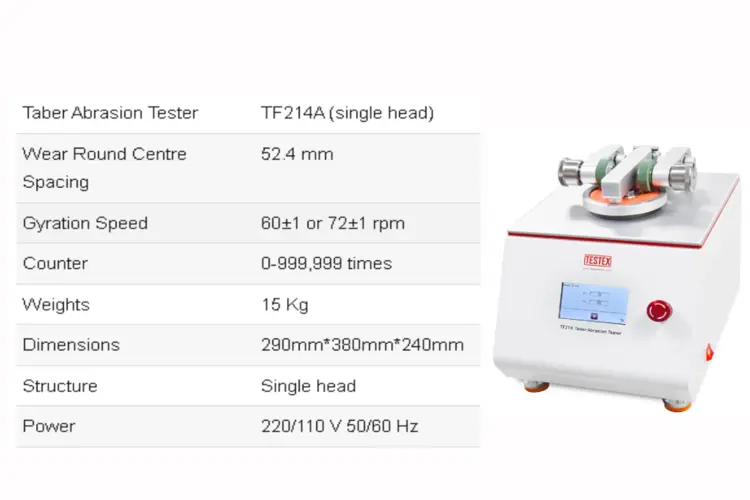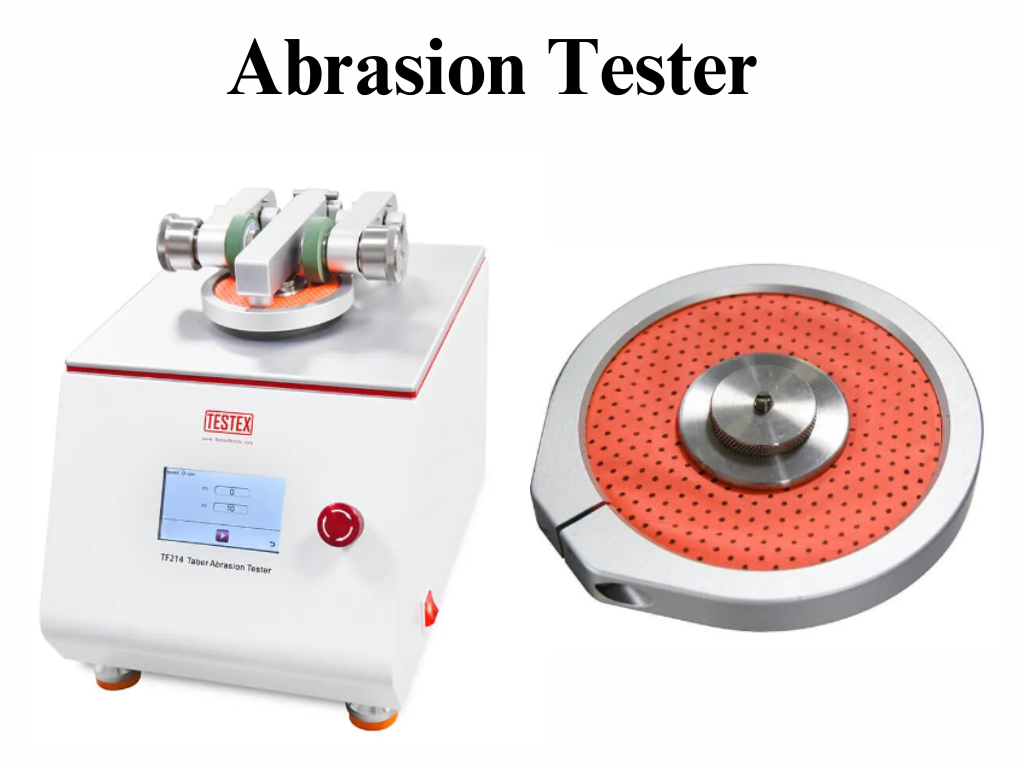What Are Abrasion Testing Devices?
Abrasion testers are machines used to gauge a material’s resistance to abrasion, which is the process of surface wear caused by rubbing or friction. These devices play a vital role in industries like textiles, automotive, and construction, where assessing the durability and performance of materials is critical.
There are different types of abrasion testers, such as rotary drum testers, Taber abraders, and flex abrasion testers. Each type uses a distinct method to apply a defined amount of force and friction to a material sample. The extent of wear or damage is then measured to determine the material’s abrasion resistance.
Abrasion testers are crucial for evaluating the longevity and effectiveness of materials that will face substantial wear and tear in their applications.
How is Abrasion Measured?
There are several methods to measure abrasion, depending on the type of abrasion tester and the material being tested. Common techniques include:
- Weight Loss: This method involves weighing the sample before and after the abrasion test to determine how much material has worn away. Often used with a rotary drum tester, the sample rotates against an abrasive surface, and the difference in weight before and after the test indicates the amount of abrasion.
- Surface Roughness: This technique assesses the roughness of the material’s surface after wear using a profilometer. The device measures the heights of peaks and valleys on the surface, with greater roughness indicating more abrasion.
- Visual Inspection: Sometimes, abrasion is measured by visually examining the sample to assess the extent of wear or damage. This method is often combined with weight loss and surface roughness measurements for a more comprehensive assessment of the material’s abrasion resistance.
Application of Abrasion Tester
Abrasion testers are crucial for assessing the wear resistance of materials, an important characteristic across various industries. Key applications include:
Textile Industry: Abrasion testers measure the durability of fabrics and textiles, including clothing, upholstery, and carpeting.
Automotive Industry: These testers evaluate the wear resistance of automotive parts such as tires, belts, and hoses, ensuring they can endure rigorous use.
Construction Industry: Abrasion testers test the durability of construction materials like concrete, asphalt, and paint, ensuring they withstand the stresses of construction environments.
Medical Industry: These testers assess the wear resistance of medical devices, including stents, joint replacements, and prosthetics, ensuring they can endure the demands of use within the body.
Most Popular Abrasion Tester Brand in the Textile Industry

The TabWear Abrasion Tester, often known as the “TabWear machine,” is built to assess how well fabrics, leather, and other materials hold up against wear. It meets standards like ASTM D3884, ASTM D3389, ASTM D4060, and ISO 5470. Plus, the TabWear Tester TF214 is easy to use, needing little training to operate effectively, which helps cut down on costs.
Key Features:
1. Precision Test Results: We carefully choose grinding wheels and robust test arm components, rigorously ensuring high quality and stable performance to deliver accurate Taber abrasion test results.
2. Consistent Repeatability: By using identical samples and equipment in numerous tests, we achieve consistent results in assessing abrasion resistance.
3. Reliable Reproducibility: Whether testing the same samples or different machines of the same model multiple times, we consistently achieve reliable results, demonstrating our high standards of reproducibility.
4. Durable Construction: Crafted from stainless steel, the TESTEX TabWear withstands corrosion and rust, ensuring an extended service life.
5. User-Friendly Design: Loading and unloading grinding wheels is quick and simple. Key components are easily replaceable, and operation via a color touch screen ensures intuitive use and efficient testing.
You may also like:
- Supima Cotton: Properties, Production, and Origins
- Using a Seam Ripper: A Step-by-Step Guide
- Organza Fabric: Traits, Manufacturing Process, and Origins
- Different Types of Sewing Machines
- Micromodal Fabric: Characteristics, Production, and Origins
- Sewing Machine Parts And Functions
- Count of Yarn: Explanation and Varieties
- Yarn Manufacturing Process
- Varieties of Woven Fabrics and Their Applications
- Non Woven Geotextile Fabric
- What is Sisal Fiber? Properties, Structure, and How It Made?
- How to Tie Dye Shirts: A Step-by-Step Guide
Share this Article!

